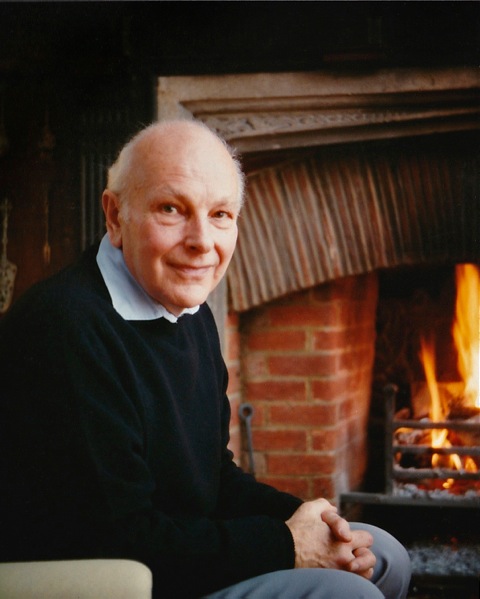
John Wickham (1927 – 2017) was British urology’s greatest innovator, who introduced the concept of minimally invasive therapy, or keyhole surgery.
His lifelong career of innovation and invention was driven by a determination to minimise the damage done by traditional open surgery, and improve the experience of patients. His role in these changes was pivotal yet under-recognised. It’s easy to forget how radical a vision this was at the time, and how much abrasive criticism he had to endure.
He was born in Chichester, West Sussex, in 1927. As a lad he had a relentless drive to fiddle with anything mechanical. In class he clearly preferred science to the arts, and planned to study medicine as a profession; perhaps a quiet GP practice in Sussex? No, not John Wickham!
At last he was starting his clinical studies at Barts, proud in his long white coat. Hospitals were run on different lines back then with the permanent ward sisters having overall control. In his book, “An Open and Shut Case”, he describes a significant premonition he had: “As I walked out under the arch of the famous Henry VIII gate into Smithfield, I knew I would be spending most of my life working in this place with its vast history dating back almost 850 years.”
In his final exam he had to examine a patient with a cardiac complaint. This included an examination with a stethoscope, and John was mortified when he could hear no cardiac abnormality. “That’s all right” he was told by the examiner, “neither did we!” He passed and rang his mother and said, “this is Dr Wickham speaking” and she burst into tears.
His first House appointment was in neurosurgery with John O’Connell (JO’C as he was known), and John was fascinated by his meticulous surgical care.
In 1958 he was Junior Registrar under the urologist Alec Badenoch, another legend in his own right. He gained his FRCS in 1959. As a middle grade registrar he was at the Hammersmith Hospital, internationally known as a centre of great innovation.
A major influence on his life was meeting “a most attractive lady in the operating theatre” whilst performing a lower limb amputation. His assistant had “beautiful blue eyes showing over the top of her operating mask”. As the leg came off she accepted his invitation to a pub crawl. That, with The Prospect of Whitby was it. He was hooked, and he and Ann were married 18 months later and over the years, three bonny girls followed!
In 1963 he was awarded a Fullbright scholarship to Lexington, USA, where he spent a year under Professor Eisemann. He researched on cooling during operations giving valuable extra operating time, and was awarded his MS in 1966.
On returning to London he was appointed consultant urologist to Barts and senior lecturer at the Institute of Urology.
In 1979, at the Institute of Urology he performed the first keyhole surgery for a kidney stone, a one stage percutaneous nephrolithotomy, with the aid of Michael Kellett, an interventional uroradiologist. It was explained to the patients that if by any chance it was unsuccessful then a standard operation would be carried out under the same anaesthesia.
PCNL, as it became known, expanded to encompass large staghorn calculi needing disintegration in situ. An annual postgraduate hands-on PCNL course was started, operating on pork loins, which were extremely successful organised by an enthusiastic Ron Miller.
In 1988 he founded the Society for Minimally Invasive Surgery, at the prestigious Royal Institution London, but realised that this was not only involving surgeons, but also interventional radiologists, technologists, and clinicians with their endoscopic skills. So the Society for Minimally Invasive Therapy, SMIT, was founded and with its internationally recognised journal of expertise.
But the new message, heard through the Intra-Renal Society meeting in Paris, was non-invasive lithotripsy, using external focused shock waves to shatter kidney stones. Requests to set this up in London by the NHS hit a stone wall. Typically, John then rounded up all those interested and with Kuwait Health Office help managed to install a Dornier lithotripter in Welbeck Street, under the noses of the NHS.
In 1992, after the closure of the Institute of Urology, John moved with SMIT to Guy’s Hospital at the invitation of Professor Lord Ian McColl. With the help of the robotic specialist, Professor Brian Davies, a ring robot known as the Probot for prostate resection was developed, leading to a world first clinical trial at Guy’s.
As John retired, robotic research was enthusiastically taken up by Professor Prokar Dasgupta, who hailed him as “the godfather of robotic surgery”.
His last lecture at the Royal Society of Medicine in London was on the future of surgery. His opening comment was that “medicine is the only profession that labours incessantly to destroy the reason for its existence”.
His last slide said it all. It showed a photograph of a plate with one small tablet in the middle. The future of surgery!
John’s impact will be judged not only on urology, but within other disciplines. It was not only the change in approach as a major moment in surgery, but the speed with which it was adopted. Many talk of the ‘transitional research’ from laboratory to patient but John went from thought to action. He was a man with a plan, associated with clarity of thought, determination, and with a great ability to incentivise, to teach, and to involve with respect other disciplines. John, you will be greatly missed.
RETURN TO 'IN MEMORIAM'